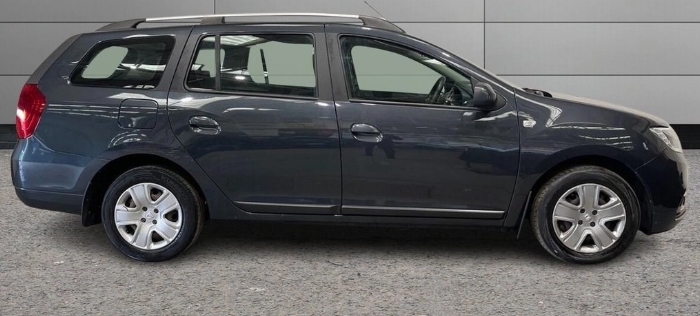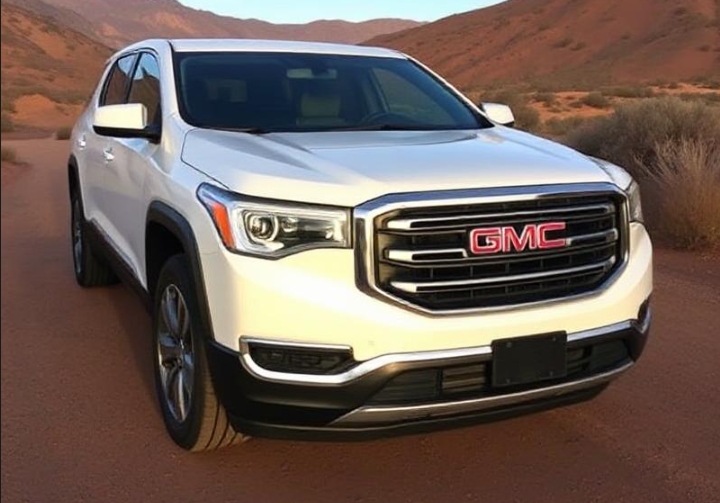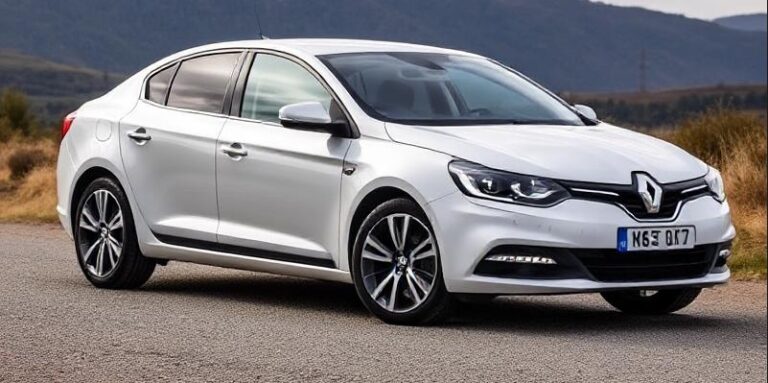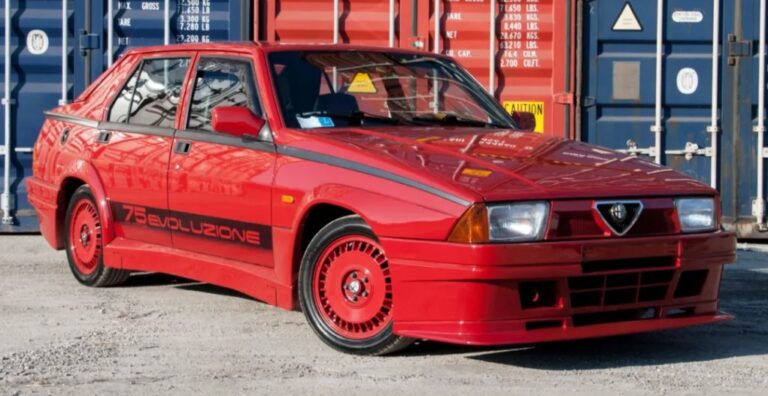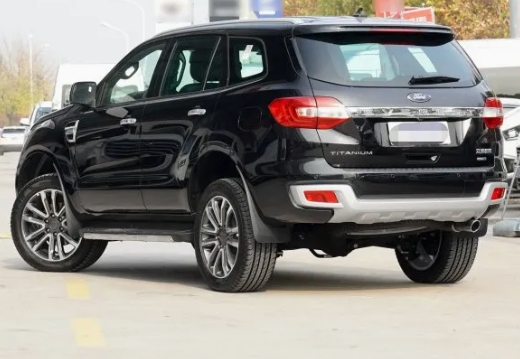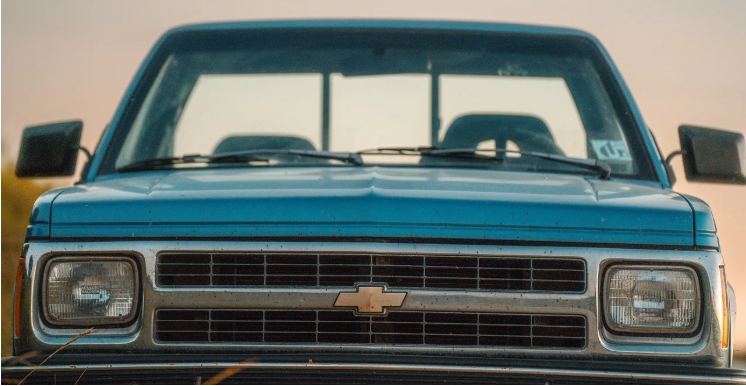The Dacia Logan: A Romanian Revolution in Affordable Motoring
The automotive landscape is often dominated by sleek lines, cutting-edge technology, and aspirations of premium status. Yet, amidst this pursuit of the extraordinary, a quiet revolution has been unfolding in Eastern Europe, spearheaded by a car that embodies pragmatism, affordability, and sheer resilience: the Dacia Logan. Born from necessity and nurtured by a unique Franco-Romanian partnership, the Logan’s journey from a humble project to a global phenomenon is a compelling narrative of innovation born from constraint. This article delves into the evolution of the Dacia Logan, tracing its development, exploring its various iterations, and celebrating its enduring impact on the automotive world.
The Genesis: A Vision for Romanian Roads (Early 2000s)
The story of the Dacia Logan begins in the post-communist era of Romania. Dacia, a state-owned enterprise for decades, was acquired by the Renault-Clio group in 1999. Renault’s strategic vision was ambitious: to create a modern, reliable, and crucially, affordable car specifically tailored for emerging markets, with Romania at its core. The goal was not to compete with established Western European offerings but to provide a vastly superior alternative to the aging, often unreliable vehicles that had been the norm.
The “Dacia X90” project, as it was initially known, was a monumental task. The brief was clear: build a robust, spacious, and simple car that could withstand challenging road conditions and be easy to maintain. The target price was an astonishing €5,000 (excluding taxes), a figure that seemed almost impossible to achieve with a new vehicle. Renault leveraged its existing technology, largely drawing from the second-generation Renault Clio platform and powertrain components, but adapted them for the Logan’s specific needs. Durability and cost-effectiveness were paramount, leading to a design that prioritized mechanical simplicity and the use of fewer, more robust parts.
.

.
First Generation (2004-2012): The Dawn of a New Era
The Dacia Logan made its official debut in September 2004. It was a revelation. Suddenly, Romanian consumers, and soon those in other emerging markets, had access to a brand-new car with modern styling, a capacious interior, significant boot space, and a reputation for being tough.
Models and Trim Levels (First Generation):
The initial Logan was offered in a single body style: a four-door sedan. This was the most practical and cost-effective configuration for the target markets. While specific trim level names varied slightly by region and over time, the core philosophy remained consistent: basic functionality with increasing comfort and features.
- Base/AMBITION (Entry-Level): This was the no-frills version, embodying the €5,000 target price. It typically featured:
- Basic fabric upholstery.
- Manual windows.
- No radio or perhaps a very basic radio/cassette player in early models.
- Minimal exterior trim.
- Powered by an 8-valve 1.4-liter (75 hp) or a 1.6-liter (90 hp) petrol engine. A 1.5-liter dCi turbodiesel engine (65 hp or 85 hp) became available later, offering excellent fuel economy.
- Often featured steel wheels with plastic hubcaps.
- PRESTIGE (Mid-Range): This trim level added a touch more comfort and convenience, aiming for a slightly more discerning buyer. Features often included:
- Power steering.
- Electric front windows.
- Central locking.
- Body-colored bumpers.
- A more integrated radio/CD player.
- Potentially a tachometer.
- The same engine options as the base model.
- LAUREATE (Top-Tier): This was the most well-equipped version, offering features that were becoming standard in Western European cars. It typically boasted:
- Air conditioning.
- Alloy wheels.
- Fog lights.
- Chrome exterior accents.
- Improved interior trim and upholstery.
- Electric rear windows in later iterations.
- ABS (Anti-lock Braking System) became an option and later standard on some versions.
- The more powerful variants of the 1.6-liter petrol and 1.5-liter dCi diesel engines.
Beyond the Sedan: Expanding the Logan Family
While the sedan was the initial focus, Dacia quickly recognized the need for greater versatility.
- Dacia Logan MCV (2006-2020): The Multi-Purpose Vehicle (MPV) extension, known as the MCV, was a significant addition. This was a much longer vehicle with a substantial estate car body, offering incredible practicality and space for up to seven passengers (in certain configurations). The MCV was a game-changer, proving that affordability didn’t have to mean compromise on utility. It was particularly popular with taxi drivers and families requiring maximum cargo capacity.
- Trim Levels (MCV): The MCV generally followed a similar trim structure to the sedan, with AMBITION, PRESTIGE, and LAUREATE levels, offering progressively more features.
- Dacia Logan Van (2007-2013): A commercial variant, the Logan Van, stripped out the rear seats and windows to create a dedicated cargo space. This catered to small businesses and tradespeople seeking an economical workhorse.
- Dacia Logan Pick-Up (2008-2012): For a more utilitarian purpose, the Logan Pick-Up offered an open cargo bed. While less common, it further demonstrated Dacia’s commitment to a diverse utility vehicle strategy.
The first-generation Logan was a remarkable success. It quickly became the best-selling car in Romania and found significant traction in markets across Central and Eastern Europe, North Africa, and even Latin America, often sold under the Renault brand (e.g., Renault Logan, Renault Sandero – a hatchback sibling). Its simple mechanics, relatively low running costs, and robust build quality made it ideal for regions where road infrastructure was less developed and access to advanced servicing was limited.
Second Generation (2012-2020): Refinement and Wider Appeal
In 2012, Dacia unveiled the second generation of the Logan. While retaining its core values of affordability and robustness, the new model represented a significant step forward in terms of design, interior quality, and technology.
Design and Engineering: The exterior received a more sculpted and modern look, shedding some of the utilitarian boxiness of its predecessor. The interior saw a substantial upgrade in materials and ergonomics, making it feel more like a conventional modern car. Renault’s expertise in safety was also incorporated, with the second-generation Logan offering improved crash performance.
Models and Trim Levels (Second Generation): The sedan remained the core offering, but the wider Dacia family continued to grow.
- Dacia Logan (Sedan):
- ACCESS (Entry-Level): The most basic version, still focused on affordability. Typically featured:
- Standard safety equipment (ABS, ESP on later models)
- Manual windows and mirrors
- Basic audio system (often optional)
- Cloth upholstery
- Powered by a 1.2-liter 16V petrol engine (75 hp), a 0.9-liter TCe turbocharged petrol engine (90 hp), and the ubiquitous 1.5-liter dCi diesel (75 hp or 90 hp). An LPG (Liquefied Petroleum Gas) option was also available for some engines.
- AMBITION (Mid-Range): Added key comfort and convenience features:
- Power steering
- Body-colored bumpers and door handles
- Electric front windows
- Remote central locking
- More advanced audio system with Bluetooth and USB connectivity.
- Driver’s seat height adjustment.
- PRESTIGE (Top-Tier): The most comprehensively equipped version:
- Air conditioning.
- Alloy wheels.
- Fog lights.
- Cruise control.
- Rear parking sensors.
- Touchscreen infotainment system with navigation (optional or standard depending on market and year).
- Leather-wrapped steering wheel.
- Chrome interior accents.
- ACCESS (Entry-Level): The most basic version, still focused on affordability. Typically featured:
- Dacia Logan MCV (2013-2020): The MCV also received a complete redesign, becoming a more stylish and modern estate car. It continued to offer the same trim levels as the sedan, emphasizing its practicality for families and businesses. A seven-seat option remained available.
- Dacia Logan Van / Pick-Up: These commercial variants continued to be offered, based on the new platform, providing cost-effective solutions for businesses.
The second-generation Logan cemented Dacia’s reputation for value. It managed to offer a significant upgrade in perceived quality and features while maintaining incredibly competitive pricing. The introduction of more modern engines, including turbocharged petrol units, improved fuel efficiency and performance. The adoption of electronic stability control (ESP) as standard across the range further enhanced safety.
Third Generation (2020-Present): A Bold New Direction
The year 2020 marked a significant turning point for the Dacia Logan with the introduction of the third generation. This iteration represented a bolder, more contemporary design language and a substantial technological leap, while still fiercely defending its affordable core identity.
Design Evolution: The third-generation Logan sports a more rugged, crossover-inspired aesthetic, with higher ground clearance, prominent wheel arches, and a distinctive Y-shaped LED light signature. This design language is shared across the new Dacia family, including the Sandero and Jogger. The interior has also been thoroughly modernized, with a cleaner dashboard layout, better materials, and a more intuitive infotainment system.
Models and Trim Levels (Third Generation): The Logan sedan is now part of a slightly reconfigured lineup, with the most rugged variant taking center stage.
- Dacia Logan (Sedan / Stepway): The traditional sedan is still offered, but the focus has shifted significantly towards the Stepway variant. The Stepway is essentially a Logan with an SUV-like appearance:
- Increased ride height.
- Body cladding.
- Roof rails.
- Distinctive front and rear bumper designs.
- ESSENTIAL (Entry-Level): The bedrock of affordability, offering core functionality.
- Manual air conditioning.
- Dacia Media Control (a system using your smartphone for infotainment via a dedicated app).
- Basic safety features.
- Steel wheels.
- Powered by the 1.0-liter SCe naturally aspirated petrol engine (65 hp) or the 1.0-liter TCe turbocharged petrol engine (90 hp). A Bi-Fuel (LPG/petrol) version of the TCe 100 engine is also available.
- EXPRESSION (Mid-Range): Steps up the comfort and technology.
- Dacia Plug & Radio (a more traditional but still basic audio system).
- Electric front windows.
- Cruise control.
- Body-colored door mirrors.
- 16-inch steel wheels.
- STEPWAY (Top-Tier – specifically referencing the Stepway variant): This trim level embodies the rugged, adventurous spirit.
- Dacia Media Nav (a proper 8-inch touchscreen infotainment system with navigation).
- Keyless entry.
- LED fog lights.
- Exclusive Stepway upholstery and trim.
- 16-inch alloy wheels.
- Often equipped with the more powerful TCe 100 Bi-Fuel engine or the TCe 90 engine.
The Dacia Jogger: A Successor and Evolution
It’s important to note that with the third generation, the role of the traditional seven-seat MPV (Logan MCV) has arguably been taken over by the Dacia Jogger. The Jogger is a unique proposition, blending estate car practicality with SUV styling and MPV space, and it has become Dacia’s flagship for family transport. Essentially, the spirit of the Logan MCV lives on in the Jogger.
The Enduring Legacy of the Logan
The Dacia Logan’s evolution is a testament to intelligent engineering and a deep understanding of market needs. From its humble beginnings as a vehicle designed to put Romania on four wheels, it has transformed into a global success story. It has proven that a car doesn’t need to be expensive or overly complex to be desirable. Its core tenets of affordability, durability, and practicality have resonated with millions of buyers worldwide, particularly in markets where cost of ownership is a primary concern.
The Logan has not only revolutionized the affordable car segment but has also played a significant role in the revival and global expansion of the Dacia brand. It has shown the automotive world that there is a substantial and underserved market for no-nonsense, well-built vehicles that prioritize function over flash. As the automotive industry grapples with electrification and increasingly sophisticated technology, the Dacia Logan’s continuing journey demonstrates that, in the right hands, value and substance will always find their audience. It remains a symbol of what can be achieved when innovation is driven by necessity and a commitment to making motoring accessible to the many, not just the few.
